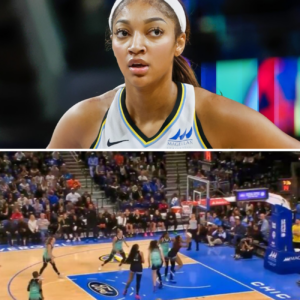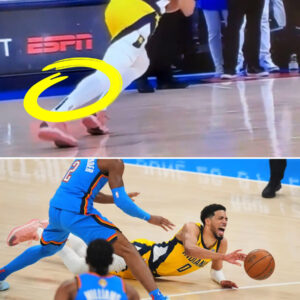Caitlin Clark’s remarkable debut in the WNBA is reshaping the landscape of women’s basketball and igniting discussions about the potential emergence of a rival league, primarily due to financial disparities within the sport.
Her historic performances and lucrative endorsement deals have underscored the pressing need for change in the WNBA, as players increasingly consider alternatives that promise better pay and opportunities.
Clark’s entry into the league has set new standards, notably with her historic triple-double during her rookie season.
This achievement not only broke records but also raised expectations for future players, demonstrating the transformative potential of emerging stars in women’s sports.
Her impact was further evident when the Indiana Fever qualified for the playoffs for the first time in nearly a decade, highlighting how a single player’s talent can revitalize a team and elevate the league’s profile.
However, the financial struggles faced by WNBA players reveal a significant pay gap compared to their NBA counterparts.
Many players are compelled to seek additional income overseas due to the league’s limited financial compensation, which has become a significant issue in women’s professional basketball.
For instance, Clark’s rookie salary is just $76,535, a stark contrast to the earnings of male players. This disparity emphasizes the urgent need for reform within the WNBA to retain its top talent
Clark’s recent eight-figure endorsement deal with Nike illustrates her immense marketability and raises critical questions about the WNBA’s ability to effectively capitalize on its star athletes.
As players like Clark garner substantial endorsements while still facing inadequate salaries, the potential for a rival league is gaining traction.
Such a league could offer better pay and conditions for female basketball players, addressing the financial gaps that currently exist and preventing them from seeking opportunities abroad.
Discussions around this new league have included proposals for player ownership stakes, which would empower athletes and provide them a voice in league operations.
This shift in governance could reshape the dynamics of women’s basketball, fostering a more equitable environment for female athletes.
Clark’s influence transcends her on-court performance; she is also reshaping public perceptions of women’s basketball.
Her success is crucial in attracting attention to the sport, as evidenced by record viewership for her games and widespread media coverage.
Comparisons to basketball legends like Michael Jordan and Steph Curry only serve to elevate the profile of women’s basketball further, suggesting that Clark could be among the greatest players in history.
The combination of Clark’s historic debut and the ongoing discussions about league structures signals a potential turning point for women’s basketball.
With her success, there is a renewed focus on the financial viability of the WNBA, the treatment of female athletes, and the broader implications for the future of women’s sports. As the landscape evolves, Clark stands at the forefront, symbolizing the possibilities that lie ahead for the league and its players.
News
SHOCKING: Kanye West was suspended from Instagram immediately after making rude comments about Trevor Noah, South Africans were outraged when they learned the truth…/hi
Kanye West suspended from Instagram after slur against Trevor Noah This article is more than 2 years old West used racial slur after Noah criticised his behaviour…
BREAKING NEWS: Trevor Noah did this for Jordyn Taylor while she was struggling with the pain of a great loss../hi
Trevor Noah strolls with new model girlfriend Jordyn Taylor, as her heartbreak after her fiancé was killed in a freak car accident is revealed Smitten Trevor Noah…
BOILING POINT: Caitlin Clark and Rhyne Howard in Explosive Confrontation as Benches Nearly Clear in Fever vs. Dream Drama!
Caitlin Clark, Rhyne Howard exchange words during Fever’s heated win against Dream Caitlin Clark was involved in another heated exchange Getty Images Caitlin Clark had a frustrating night…
Angel Reese Managed To Set Women’s Basketball Back A Quarter Century With The Most Embarrassing 15 Seconds In WNBA History
Angel Reese Managed To Set Women’s Basketball Back A Quarter Century With The Most Embarrassing 15 Seconds In WNBA History Angel Reese (Photo via Twitter) Basketball fans…
Caitlin Clark’s Short Skirt Had Folks On Social Media Saying All Sorts Of Things Ahead Of The Fever’s Game vs. The Dream
Caitlin Clark’s Short Skirt Had Folks On Social Media Saying All Sorts Of Things Ahead Of The Fever’s Game vs. The Dream Caitlin Clark (Photos via Yahoo…
AFTER CAITLIN CLARK WAS FLOORED, SOPHIE CUNNINGHAM EXPLODES: ‘ENOUGH IS ENOUGH!’ – Sparks Outrage as She Calls Out WNBA Vets for ‘Targeted Attacks’ and a League That Turns a Blind Eye!
WATCH: Caitlin Clark Drops to the Floor in Disbelief After Sophie Cunningham’s Impressive Half-Court Shot The Indiana Fever have made it known that they are hunting for…
End of content
No more pages to load









